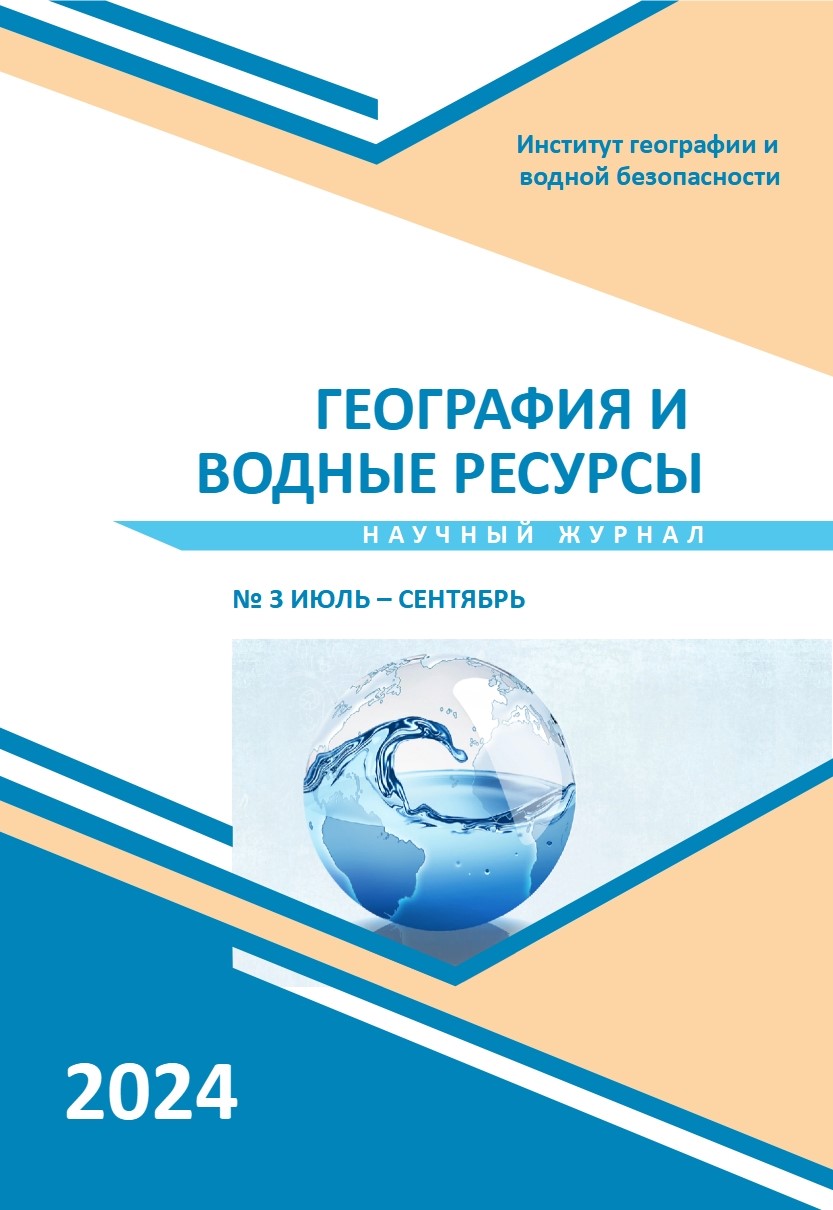POLLUTION OF SOIL COVER OF LANDSCAPES IN TURKESTAN REGION DUE TO THE INFLUENCE OF ANTHROPOGENIC FACTORS
Main Article Content
Abstract
Turkestan region is located in the south of Kazakhstan and is one of the industrially and agri-culturally developed regions of the republic. As the intensity of nature management in Turkestan region increases, pollution occurs under the influence of anthropogenic factors. Taking into account anthropogenic factors, the composition of chemical elements of the soil cover in genetic layers was studied in typical natural areas of the landscape system; and soil sections were made to determine the composition. The concentrations of chemical elements (C, O, Na, Mg, Al, Si, K, Ca, Ti, Fe, Pb, As, Cu, Zn, Ni, Co, V, Tl, Mn, and Sr) were analyzed based on the results of the analysis of samples from soil sections. The amount of chemical elements of the soil cover was determined using the Spectroscan MAX GF-2E device. The obtained data were statistically processed using the Microsoft Excel program. Chemical analysis of the soil cover (Pb, Cu, Zn, As, and Cr) showed that the chemical elements exceed the maximum allowable concentration. The results of the study are the basis for developing recommendations for solving problems related to the pollution of landscapes due to the impact of anthropogenic factors on the soil cover.
Article Details
References
Ozgeldinova Z., Janaleyeva K., Auyezova Z., Mukayev Z., Ramazanova N. The present-day geoecologic situation of Kenghir River basin geosystem // Biosciences Biotechnology Research Asia. – 2015. – No. 12(3). – P. 3041-3051. http://dx.doi.org/10.13005/bbra/1987
Ozgeldinova Z. O., Janaleyeva K. M., Auyezova Z. T., Ospan G. T., Kaygusuz M. Assessment of human impacts on geosystems of sarysu river basin // Fresenius Environmental Bulletin. – 2019. – No. 28(8). P. 6019-6026.
Glazovskaya M. A. Physico-geographical zoning of Kazakhstan // Physico-geographical zoning of the USSR. – M.: Izd. v. Mosk. un-ta, 1960. – P. 137-168.
Anarbaev A. E., Mursalov D., Auesbekov N., Igembaeva A.K. The study of agricultural lands taking into account the peculiarities of their use on the example of Turkestan region // Research, results. – 2021. – No. 4(92). – P. 47-58.
Горшков С. П. Экзодинамические процессы освоенных территорий. – М.: Недра, 1982. – 286 с.
Vinogradov A. P. Geochemistry of rare and dispersed chemical elements in soils: Academy of Sciences of the USSR, V. I. Vernadsky Institute of Geochemistry and Analytical Chemistry. V. I. Vernadsky. – 2nd ed., supplement. – Moscow: Izd-vo Akad. of Sciences of the USSR, 1957. – 238 p.
Aбдимуталип Н. А. Физико-химические свойства исследованных почв Туркестанского региона // Вестник Национальной академии наук Республики Казахстан. – 2016. – Т. 2, № 360. – C. 39-43.
Bhawna Malik, Kirandeep kaur sandhu. Occurrence and impact of heavy metals on environment // Materials Today: Proceedings, 6 february 2023. https://doi.org/10.1016/j.matpr.2023.01.317.
Kaige Lei, Yan Li, Yanbin Zhang, Shiyi Wang, Er Yu, Feng Li, Fen Xiao, Fang Xia Development of a new method framework to estimate the nonlinear and interaction relationship between environmental factors and soil heavy metals // Science of The Total Environment. – Vol. 2023. – 905. https://doi.org/10.1016/j.scitotenv.2023.167133
Ning Li, Lu Jiang, Xiaokang Li, Yuhong Su. Enhancing phytoremediation of arsenic-contaminated soil by agronomic practices (drip irrigation and intercropping): Influence of soil organic matter // Science of The Total Environment. 2023. Vol. 891. https://doi.org/10.1016/j.scitotenv.2023.164463
Anjali Mandal a, Dipti Mundhe a, Varsha Sonkamble b, Nilesh Wagh a, Jaya Lakkakula a. 13 - Impact of heavy metal contamination on soil environment and advances in its revitalization strategies // Development in Waste Water Treatment Research and Processes. – 2022. – P. 215-241.
Ionela Cătălina Vasilachi, Vasile Stoleru, Maria Gavrilescu. Analysis of Heavy Metal Impacts on Cereal Crop Growth and Development in Contaminated Soils // Agriculture. – 13, 1983, 2023. https://doi.org/10.3390/agriculture13101983
Ladonin D. V. Fractional composition of copper, zinc, cadmium and lead compounds in some types of soils under polyelemental pollution // MSU Herald.– 2003. – Series 17, No. 1. – P. 8-15.

